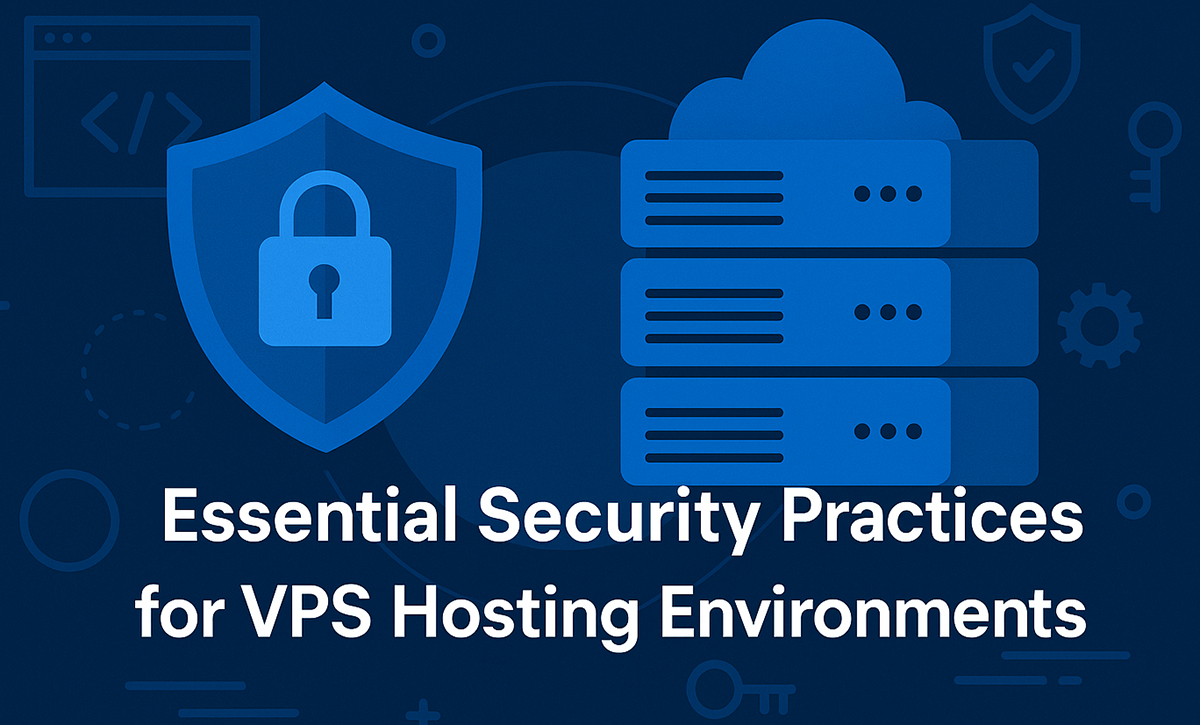No products in the cart.
 Taking Charge of VPS Security
Taking Charge of VPS Security
As businesses increasingly migrate to Virtual Private Servers (VPS) for greater flexibility, control, and performance, ensuring VPS security has become a top priority. Unlike shared hosting, where most security layers are managed by the host, VPS hosting places more responsibility on the business or system administrator. Securing your VPS hosting environment is crucial for safeguarding sensitive data, maintaining consistent uptime, and preserving customer trust.
In this comprehensive guide, we will discuss the most critical VPS security best practices, highlight their impact on scalability and performance, and share real-world examples of successful implementations.
Why VPS Security Matters
A compromised VPS can lead to:
- Data breaches and leaks
- Downtime and lost revenue
- Reputation damage
- Compliance violations
Implementing a proactive security strategy that evolves alongside your infrastructure is crucial for preventing these risks. Let’s look at the key VPS security best practices you should adopt.
Strengthening Your VPS Hosting Environment
One of the most fundamental VPS security best practices is to use strong SSH authentication. By replacing password logins with SSH key authentication, systems gain enhanced protection against brute-force intrusion attempts. Strengthen your VPS hosting environment by implementing these additional measures:
Disable root login to reduce unauthorized access.
- Use non-standard SSH ports (like 2222 instead of 22) to make access less predictable.
- Use fail2ban to automatically block repeated failed login attempts, greatly enhancing your VPS intrusion detection and overall server security.
Control Traffic and Minimize Risk with VPS Firewalls
Setting up a robust VPS firewall configuration is also essential. Firewalls like CSF (ConfigServer Security & Firewall) or UFW can help control inbound and outbound connections, ensuring that only essential services are accessible. Regularly reviewing firewall rules and maintaining a minimal attack surface can drastically improve VPS security.
Automated Patching: A Cornerstone of VPS Security
Regularly updating your VPS environment is a critical step in safeguarding against vulnerabilities. This involves regularly patching the operating system (e.g., Ubuntu, CentOS), web servers (Apache, NGINX), and CMS platforms (WordPress, Joomla). Automating this process with configuration management tools like Ansible or Puppet ensures your system remains secure against newly discovered vulnerabilities.
Maintaining data integrity requires the implementation of a reliable backup strategy. The 3-2-1 backup strategy having 3 copies of your data, 2 stored locally, and 1 offsite is a reliable approach. Automate this process using tools like rsnapshot, Rsync, or cloud backup solutions to minimize data loss during critical events.
Enhance VPS Security with Intrusion Detection Systems
Integrating Intrusion Detection Systems (IDS) into your VPS hosting environment enhances VPS intrusion detection capabilities. Solutions like OSSEC or Snort can monitor for suspicious activity, alerting administrators in real-time. This proactive strategy is vital for detecting potential threats early, preventing them from escalating into serious security issues.
Running a secure Linux VPS also means installing antivirus software. Tools like ClamAV are effective for scanning and removing malware that could compromise VPS performance. Regularly scheduling scans helps maintain a clean server environment, minimizing risks.
Improving Performance with Security
Security does not only protect your VPS hosting environment—it also enhances performance. For instance, properly configured firewall rules reduce unwanted traffic, freeing resources and optimizing system throughput. Regular OS and software updates ensure stability, especially during high-load conditions.
Automating security monitoring and maintenance with AI-driven tools allows your team to focus on business growth instead of manual checks. This proactive approach enhances VPS hosting performance and scalability by reducing downtime and preventing unnecessary resource consumption.
VPS Security: A Business Imperative, Not an Option
Securing your VPS hosting environment is not optional it is fundamental to your business success. By implementing these VPS security best practices, companies can ensure their VPS performance remains optimal while minimizing risks. Proactive monitoring, automated updates, and regular vulnerability assessments are essential for maintaining a secure VPS environment.
Staying ahead of potential threats through continuous security practices is the key to not only protecting your data but also enhancing your server’s performance and scalability. Adopting these strategies will help your business thrive in an increasingly digital world.
Final Thoughts
In an era where uptime, data protection, and performance directly impact business success, securing your VPS environment is more than a technical task—it’s a strategic imperative. By embracing essential security practices and maintaining a proactive, evolving approach, businesses can safeguard their digital assets, enhance system reliability, and confidently scale for the future. A well-secured VPS is not just a defense mechanism—it’s a foundation for sustainable growth.
Stay connected on Facebook, Twitter, LinkedIn
Don’t miss our latest post:(How GenAI Is Transforming Server and Cloud Support)
Subscribe for free blog updates:



 Taking Charge of VPS Security
Taking Charge of VPS Security